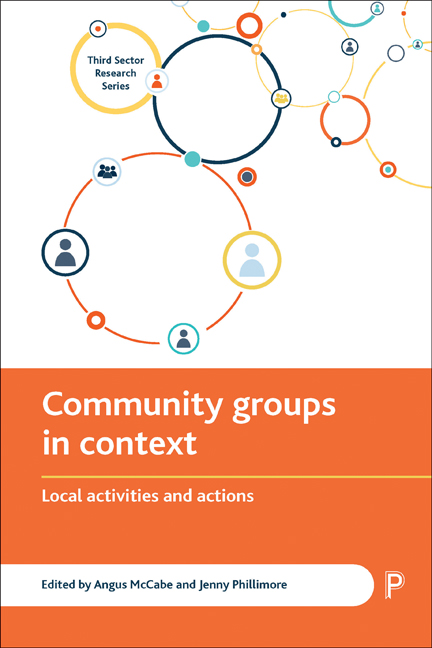Book contents
- Frontmatter
- Contents
- List of tables and figures
- Foreword
- Series editor’s foreword
- Acknowledgements
- Notes on contributors
- Introduction Why get below the radar? The importance of understanding community groups and activities
- Part One Scoping and mapping community actions and activities
- Part Two Community groups and activities in context
- Part Three Under-explored radars
- Part Four Thinking about voice, learning and emotion below the radar
- Index
eight - Understanding grassroots arts groups and practices in communities
Published online by Cambridge University Press: 05 April 2022
- Frontmatter
- Contents
- List of tables and figures
- Foreword
- Series editor’s foreword
- Acknowledgements
- Notes on contributors
- Introduction Why get below the radar? The importance of understanding community groups and activities
- Part One Scoping and mapping community actions and activities
- Part Two Community groups and activities in context
- Part Three Under-explored radars
- Part Four Thinking about voice, learning and emotion below the radar
- Index
Summary
Chapter aims
This chapter aims to:
• consider the distinctive elements of the amateur and grassroots arts sector;
• assess current understandings of the impacts and experiences of grassroots arts groups in communities;
• question the current critical framing of amateur and grassroots arts activities and groups;
• reflect on the direction of future research in amateur and grassroots arts in communities.
The amateur and grassroots arts sector
The most recent assessment of the scale of amateur arts participation in England came in the study Our creative talent, commissioned by the Department for Culture, Media and Sport (DCMS) and Arts Council England in 2008. The report judged that:
[T]here are 49,140 groups across the country with a total of 5.9 million members. An additional 3.5 million people volunteer as extras or helpers – a total of 9.4 million people taking part. (Dodd et al, 2008, p 10)
Given this scale of informal arts participation and activity at grassroots level within communities, it is surprising how little research there has been on the sector. Cultural policy, and arts and cultural scholarship, has been primarily focused on formal, subsidised arts provision, artists and facilitators, while amateur arts groups and arts participation have been little considered in voluntary and community studies literature. The amateur and grassroots arts sector is diverse, rich in passion, knowledge and skills. While there is much actual crossover between amateur and commercial or state-subsidised culture in terms of shared aesthetic pleasure and social benefit, the amateur sector tends to be defined as a distinct sphere on the economic basis of its activities: that makers and participants are not paid for their creative labour. Holden's useful report The ecology of culture (2015) is a recent illustration of this distinction. In charting the wider cultural landscape in Britain, Holden identifies three spheres of culture: the publicly funded, commercially funded and ‘homemade’ cultural activities (2015, p 2). We should be cautious of accepting this distinction too readily. While the amateur and grassroots arts sector frequently has a different economic underpinning, this is not an absolute or clear-cut distinction, as we shall see, and the idea of its economic difference by no means fully characterises or describes activity in the sector.
- Type
- Chapter
- Information
- Community Groups in ContextLocal Activities and Actions, pp. 155 - 176Publisher: Bristol University PressPrint publication year: 2017



